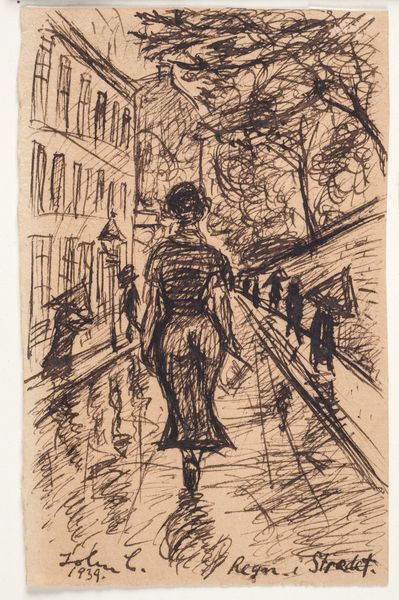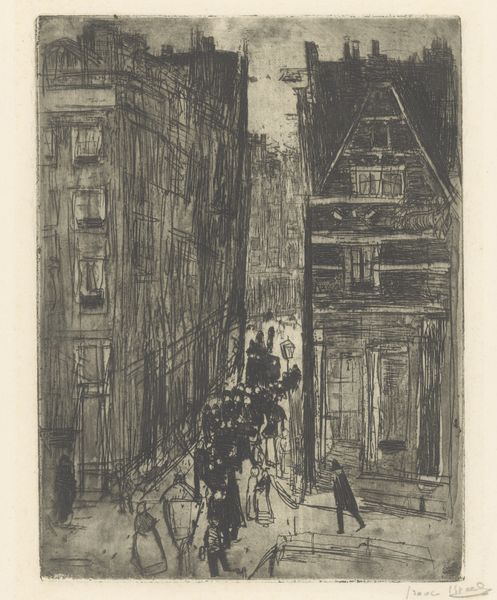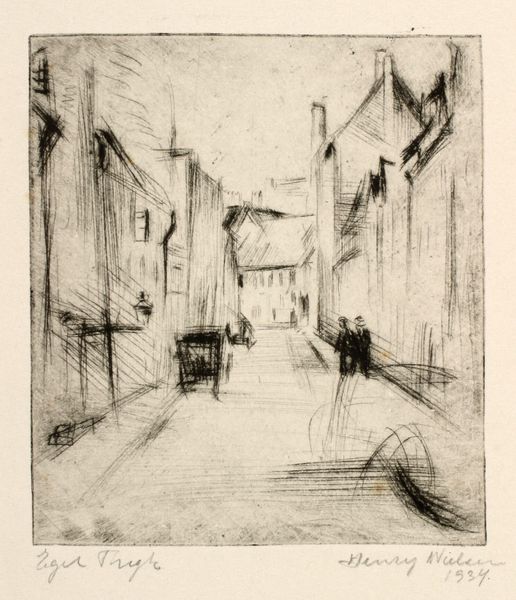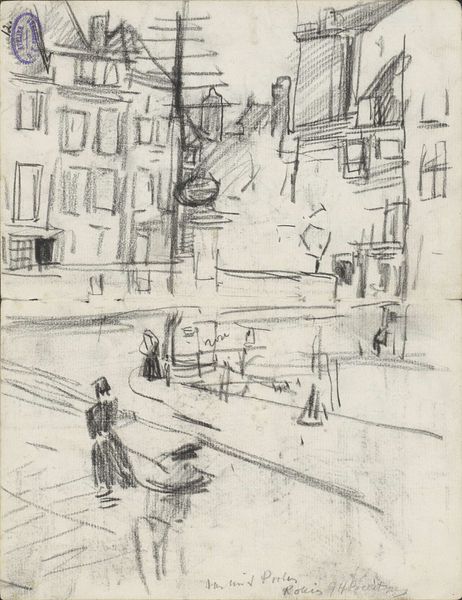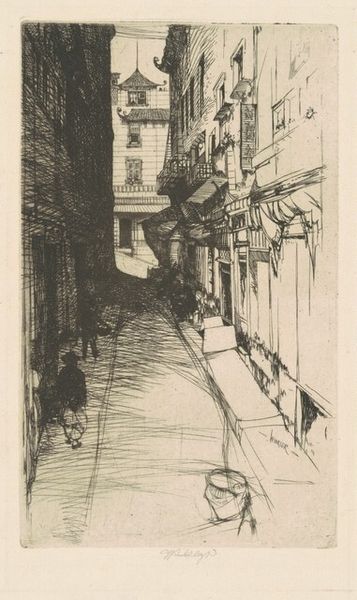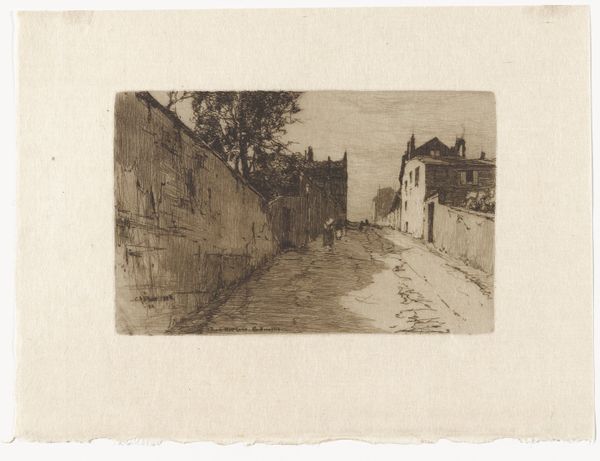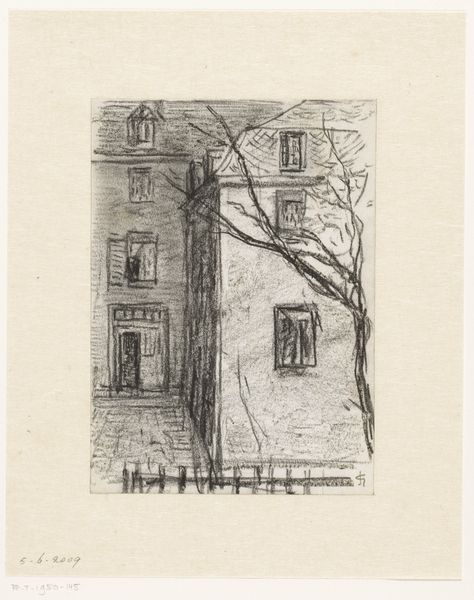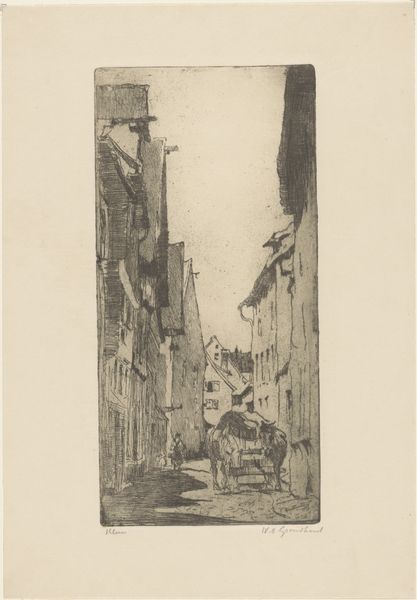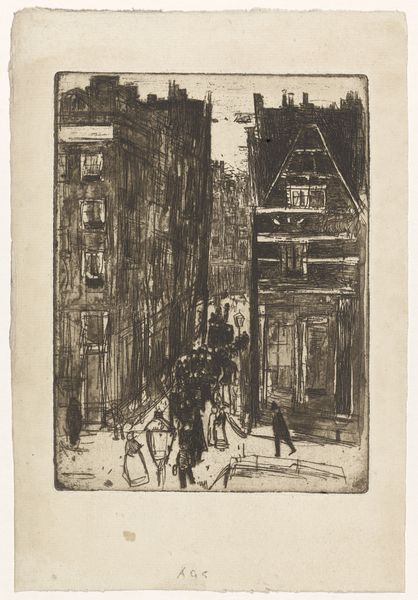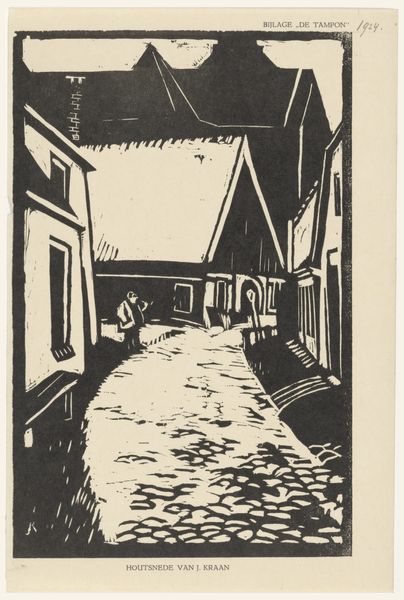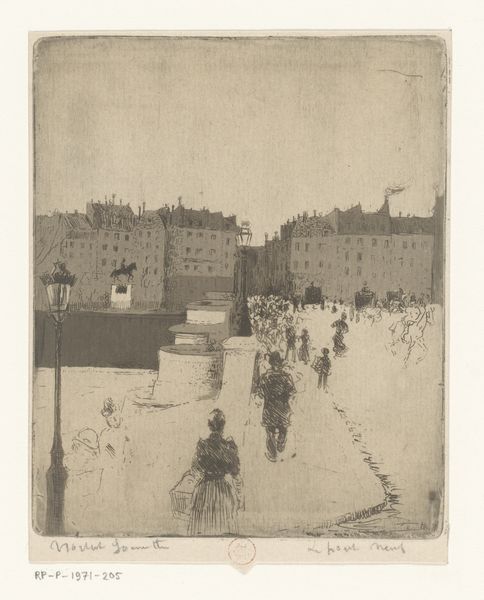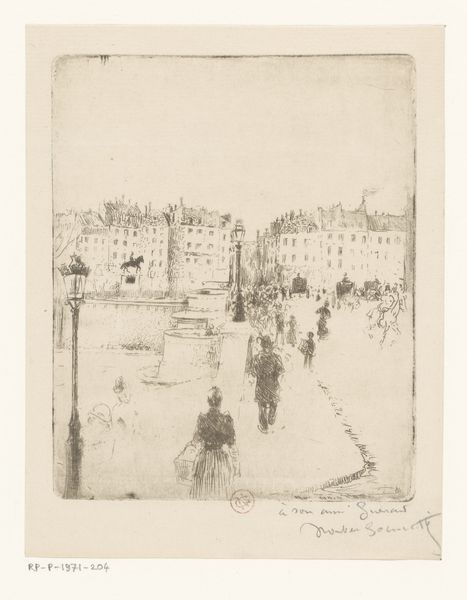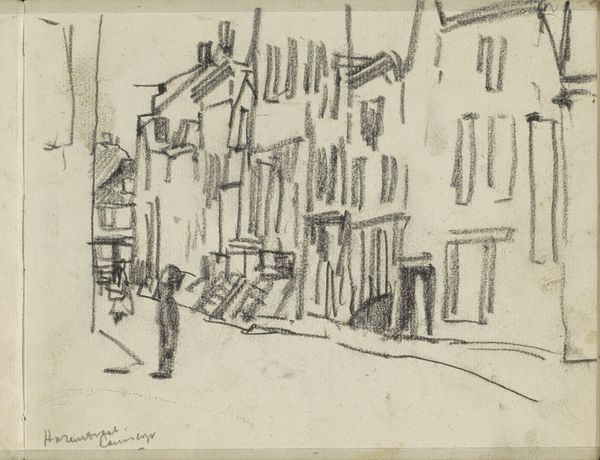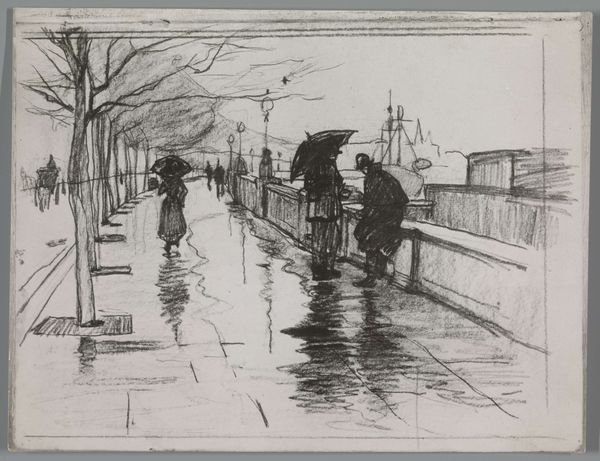
graphic-art, print, etching
#
graphic-art
#
street-art
# print
#
etching
#
landscape
#
line
#
cityscape
#
modernism
Dimensions: plate: 26.7 x 21 cm (10 1/2 x 8 1/4 in.) sheet: 39.7 x 30.2 cm (15 5/8 x 11 7/8 in.)
Copyright: National Gallery of Art: CC0 1.0
Curator: The print before us is "Rue des Plantes," or Plants Street, created in 1926 by Stanley William Hayter. It’s an etching. Editor: My first thought is about the texture – look at how Hayter captures the roughness of the cobblestones and the weather-worn buildings with just lines! Curator: Absolutely. Hayter's early work was heavily influenced by the social realities he observed. This cityscape reflects a Paris still reeling from the aftermath of the First World War – a society grappling with issues of urbanization and labor. How do you see those concerns reflected here? Editor: Well, look at the figure walking up the hill – the bag seems heavy, and their posture suggests hard work. The scene suggests a gritty urban environment where people were hustling, making their way in a city undergoing significant transformation and material change. This focus on everyday people, in a realistic style, emphasizes materiality as its core message. Curator: Precisely. We also should acknowledge Hayter's role as a key figure in 20th-century printmaking. He created Atelier 17 where many artists, especially women, experimented with intaglio processes, in what has been read as a more inclusive creative context compared to painting and sculpture at that time. How do you interpret this inclusion in the art scene from your material-centered view? Editor: This access shows in the quality of the printing. His technical approach—using open biting, and creating the sense of a deep background gives real volume, which contributes significantly to its social impact by giving the scene, literally, more depth. The print is so tactile, it calls to mind not only the cobblestones, but also a community around the making. Curator: And the modernist treatment offers a specific interpretation of early 20th-century Parisian streetscapes, a theme central to how the “city” was read through modernity and continues influencing cultural identity and urban studies. Editor: Right. Considering it as an object—the paper, the ink, and the tools he used--highlights how such images gain social meaning. Curator: Indeed. By bridging Hayter’s materials to the societal impact, we find new entryways into how "Rue des Plantes" engages its viewers to contemplate urban labor and artistry. Editor: I agree, seeing the context as something real, concrete, lets the viewer approach with open eyes, ready to see themselves in it, ready to examine the construction of their visual culture and everyday labor, ready to examine and question it with their very touch.
Comments
No comments
Be the first to comment and join the conversation on the ultimate creative platform.
